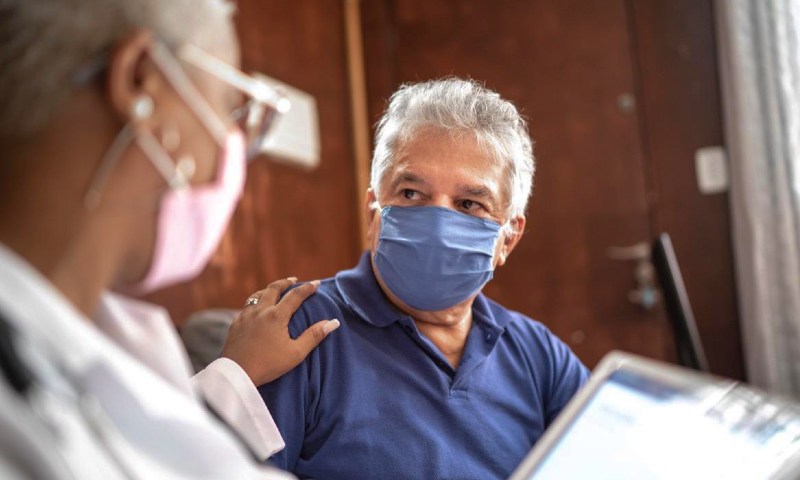To provide better care and reduce burnout, medical practices need to reduce healthcare administrative burdens. Here’s how technology can help:
In recent years, physicians and other healthcare professionals have had to tackle more and more administrative tasks. The result? Less time and focus on more important medical activities — most importantly such as providing appropriate care to patients. These administrative burdens also add unnecessary costs for providers and patients. And together with the COVID-19 pandemic, they’ve contributed to the physician burnout epidemic.
In 2021, four out of five doctors surveyed said they were completely burnt out. But ironically, COVID-19 ranked fifth among the factors that caused such burnout. In the top spot, “too much paperwork and regulations” was the cause cited by 31% of the professionals.
Let’s take a look at five ways that medical practices can reduce administrative burdens in hospitals, clinics or private practices. They can:
1. Digitize revenue cycle processes
Every hospital/clinic administrator knows what is coding and revenue cycle management and its importance to cash flow. Revenue cycle processes require extra attention, raising your administrative costs (such as billing, coding, getting paid, etc). To make things worse, minor mistakes can also be very costly.
Digitizing your clinic’s revenue cycle helps speed up a process that, when done manually, can take several days to complete. There are several digital systems and software that help healthcare providers during billing procedures. They take care of steps such as verifying insurance coverage, authorization and referral management, generating reports, submitting claims, among others.
2. Optimize clinical charting processes
The clinical charting process is time-consuming and requires a lot of doctors an nurses, who also have high turnover. Documenting and managing clinical data is a mandatory and essential task, but this is not always done properly.
In addition to occupying professionals’ time, the use of outdated technologies ends up generating a lack of interoperability between systems from different hospitals.
Electronic health record (EHR) efficiency improvements can reduce doctors’ administrative burden. But it’s important to invest in optimized, standardized tools to avoid a lot of work and waste of money.
3. Hire competent, tech-smart staff
Whenever you need to hire professionals for your hospital or clinic, don’t forget to thoroughly vet them, train them properly, and provide them with the right tools. Here are some characteristics you should look for:
Experience: The professional already has some experience and is prepared to deal with emergencies with calm and attention, avoiding wrong decisions that can lead to costly medical errors.
Competency: Review the candidate’s resume or CV to find out if, in addition to experience, they also took up a specialization or continuing education courses to keep up to date with new treatments and practices.
Knowledge in Technology: With many processes being digitized, it’s more practical for you to choose someone who already knows these technologies than a professional who needs to learn everything from scratch.
4. Conduct a medical practice audit
Perhaps it is the right time to perform an exhaustive audit of operations to identify and get rid of unnecessary and burdensome tasks.
Medical audits guarantee the continuous improvement of the quality of your clinic’s services. You choose an outcome or process — let’s say, health equipment, patient files, medication management, risk assessment, etc. Then you form a team to track how these processes are performed over a while and measure the results against the standards.
An audit will indicate whether the process or procedure is above or below the average of other healthcare providers, and will show you where you need to improve. Fortunately, you can now find technology hardware, software, services and apps that can greatly improve specific medical and operational procedures.
5. Leverage the latest technology
There are a lot of emerging technologies out there that you can adopt at a relatively low cost to streamline processes, reduce paperwork, and take the burden off your staff. A recent study has shown that most patients choose providers that offer some of these technologies.
Therefore, you should consider implementing the following tools:
- Telemedicine: This technology has always existed, but only became really popular in 2020-22 due to the COVID-19 pandemic. With this tool, you provide medical appointments remotely, by smartphone or video conference.
- Online Scheduling: If you still require the patient to go to the clinic in person to make an appointment, it’s time to change the procedure. Online scheduling and digital check-in technologies for patient admissions help to eliminate a lot of paperwork.
- Patient Portal: Many hospitals and clinics already offer healthcare-related online apps. This way patients can interact or communicate with their healthcare providers 24/7. These portals also allow them to access personal health information quickly.
- Automated Virtual Scribes: Advances in artificial intelligence and machine learning have made it possible to automate the clinical documentation process with virtual scribes. These tools use speech recognition to listen to the notes between doctor and patient and document them, eliminating manual documentation by the doctors themselves.
Focus on better healthcare
Most healthcare professionals would rather adopt new technological solutions than performing repetitive, boring administrative tasks on their own. Digitizing processes allows you to reduce paperwork, increase efficiency and save time and money.
When you reduce healthcare medical administrative burdens, you also guarantee more time for personalized care and more efficient communication between doctor and patient.
This improves the care provided, decreases the risk of medical errors, and provides a better experience for each patient and caregiver.
You can follow more of the latest news and trends by bookmarking our healthcare news and features.





